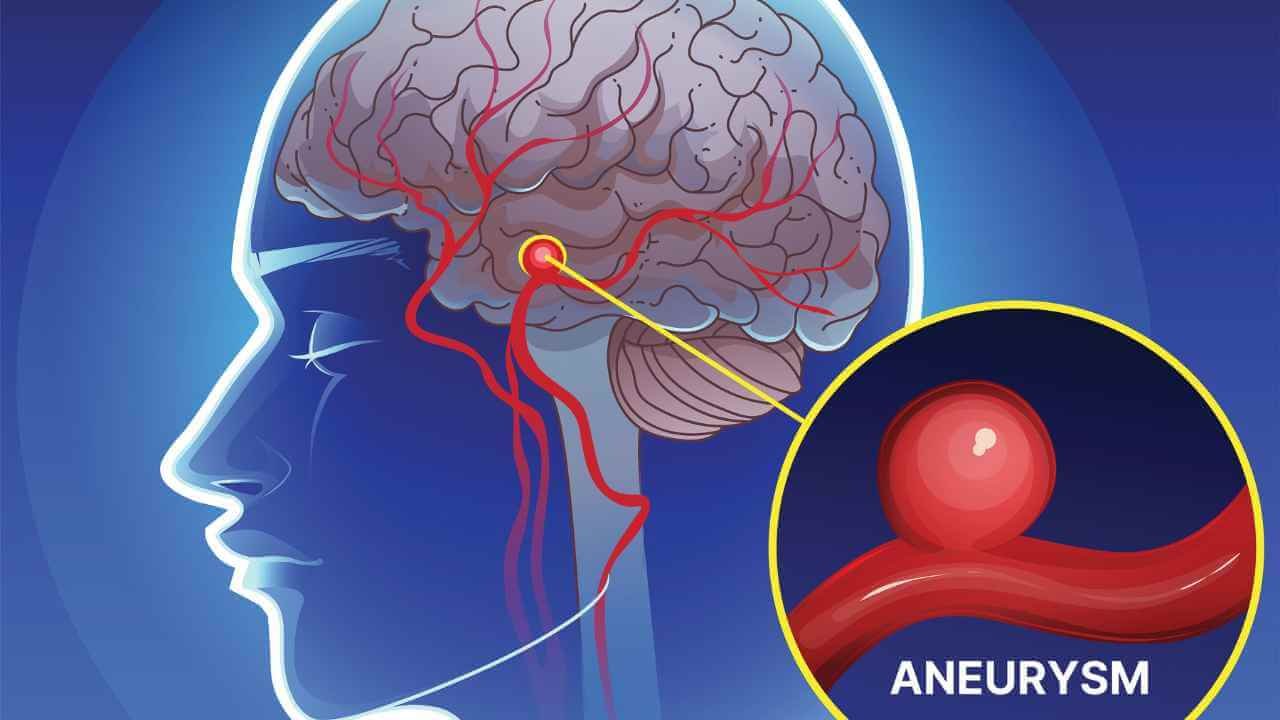Thane West, Maharashtra, 400601
Blogs

Brain Aneurysms: Warning Signs and Treatment Options
Brain aneurysms are a silent threat—often going unnoticed until they rupture, leading to potentially life-threatening complications. With early detection and timely medical intervention, however, outcomes can improve significantly. This comprehensive guide will walk you through Brain Aneurysms: Warning Signs and Treatment Options so that you can take informed steps toward prevention and care.
What Is a Brain Aneurysm?
A brain aneurysm, or cerebral aneurysm, is a balloon-like bulge in a blood vessel in the brain caused by a weakened vessel wall. If the aneurysm ruptures, it leads to bleeding in the brain, known as a hemorrhagic stroke.
Types of Brain Aneurysms
- Saccular (berry): Most common; appears like a small sac.
- Fusiform: Spindle-shaped bulge involving all sides of the vessel.
- Dissecting: Tear in the vessel wall causing blood to leak between layers.
Warning Signs of an Unruptured Aneurysm
- Localized headaches (usually behind or above the eye)
- Blurred or double vision
- Drooping eyelid
- Dilated pupils
- Difficulty concentrating
- Weakness or numbness on one side of the face
- Balance problems
Warning Signs of a Ruptured Aneurysm
- Sudden, excruciating headache ("thunderclap headache")
- Nausea and vomiting
- Seizures
- Stiff neck
- Photophobia (sensitivity to light)
- Loss of consciousness
- Confusion or altered mental state
- Difficulty speaking or walking
Risk Factors for Brain Aneurysms
- High blood pressure
- Smoking
- Family history
- Female gender
- Age over 40
- Alcohol or drug abuse (especially cocaine)
- Head trauma
- Polycystic kidney disease
- Connective tissue disorders (e.g., Ehlers-Danlos)
Diagnosing a Brain Aneurysm
- CT Scan
- MRI
- CTA (CT Angiography)
- MRA (MR Angiography)
- Cerebral Angiogram
Treatment Options for Brain Aneurysms
1. Monitoring and Lifestyle Management
Small, unruptured aneurysms may only require regular imaging and lifestyle modifications such as controlling blood pressure and quitting smoking.
2. Surgical Clipping
A neurosurgeon places a metal clip at the base of the aneurysm to block blood flow. It is a permanent solution but involves open brain surgery and recovery time.
3. Endovascular Coiling
A minimally invasive procedure where coils are inserted into the aneurysm to promote clotting and seal it off. It offers quicker recovery but may not suit all aneurysm types.
4. Flow Diversion Devices
These stent-like devices redirect blood away from the aneurysm. Over time, the aneurysm seals off naturally—ideal for wide-neck aneurysms.
Recovery After Treatment
- Regular neurological checkups
- Follow-up imaging
- Physical/occupational therapy
- Ongoing risk factor management
Lifestyle Tips for Prevention
- Eat a balanced, low-sodium diet
- Exercise regularly
- Control blood pressure
- Avoid smoking and alcohol
- Manage stress levels
- Do not ignore recurring headaches or visual disturbances
FAQs About Brain Aneurysms
- Can you live with an unruptured brain aneurysm? Yes, many people live with them under regular monitoring.
- What is the survival rate after rupture? It depends on immediate care—faster treatment improves outcomes.
- Is surgery risky? All surgeries carry some risk, but modern neurosurgical techniques reduce complications.
- What kind of headache is linked to aneurysms? Sudden, intense headaches should be treated as emergencies.
- Can they be prevented? Risk can be reduced through lifestyle changes and regular checkups.
When to See a Specialist
If you experience symptoms or have a family history, consult a neurologist. Dr. Amit Aiwale at Solaris Hospital in Thane offers expert care in diagnosing and treating brain aneurysms.
Conclusion
Brain aneurysms can remain asymptomatic for years, but when they do present or rupture, swift action is critical. Understanding the signs and exploring treatment options with a specialist like Dr. Amit Aiwale ensures the best outcomes for your neurological health.